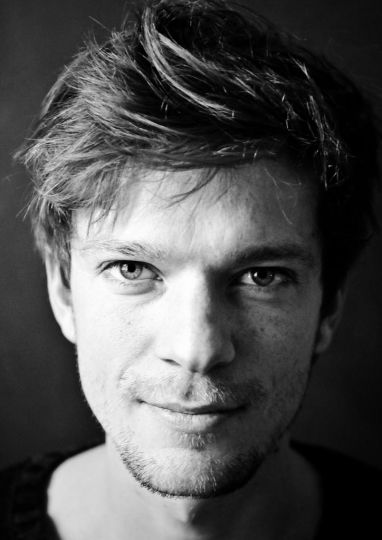Erwan Morère’s world turns round and makes your head spin. Just as the horizon is not, contrary to what was once thought, a straight line or the earth flat any more than it is the center of the universe, so humans must be put in their place, lost as they are in the unthinkable, unimaginable chaos. We must accept that there is no higher meaning just as there is no proper origin. This is why Erwan Morère’s images direct our attention towards the abyss as much as toward the sky.
Look at this child floating on his back in the swimming pool, he seems to be stunned by metaphysical questions beyond his comprehension. He is looking up at the sky, so distant, so high. His whole body is as if confounded, grappling with the enigma. All of Erwan Morère’s images similarly usher vertigo: from Latin, versare, to turn, to spin; to spiral first downwards, then upwards. And so the photographer dives in. He swims, or walks under water for a long time, until he’s too cold, then resurfaces, having captured human figures prey to a new gravity. In his world, people rarely walk upright with their feet on the ground. Anyway, if you look attentively at the different series you will realize you are witnessing the disappearance of the subject. Indeed, Morère’s subjects are never all of a piece, but always half-erased or roughly sketched: lines and dots suspended between the earth and the sky. They seem to be silhouettes that slipped behind a curtain of smoke or fog, filters that screen reality and conjure apparitions in a waking dream. Morère inspects the oneiric material of the world: we sense that he would give anything to intensify it and condense it on paper, as if to deposit the dapple-grey, woolly sky onto the surface of the print. This would be the tangible proof that reality that surrounds and envelops us isn’t beyond our grasp. In that respect, it would be a mistake to align Morère with contemplative photographers fascinated by the formal character of beauty in nature.
His landscapes – mountain ridges, coasts lacerated by the sea, stormy or feathery skies, a swarm of birds, a school of fish, sand dunes combed by the wind – are not an injunction to see something we would have walked by indifferently. Rather, they are proofs of their powerful materiality. The photographic medium is not a conveyor of the sublime but a receptacle for the weight of the world. Erwan Morère’s stark blackness sits heavy on the paper, like a fruit-laden tree that bends low toward the ground. If he could make it even denser, for example through painting, as does Pierre Soulage, he would. But he doesn’t, and this is fortunate. For the whole tension and magic of the practice of black-and-white gelatin silver photography consists in extracting ever more sensuousness from the image, in developing films in his own lab, in perfecting a technique of ink printing to produce a deep, pictorial black pigment. There has been much talk about photographic drawing in reference to Morère’s compositions since they suggest the use of charcoal. But there is no trace of charcoal or graphite. The jet blackness is rather the blind vision of an eye that turns suddenly toward the sun or is plunged into utter darkness.
Léa Chauvel-Lévy
Léa Chauvel-Lévy is a journalist and an art residency director. She lives and works in Paris.
Erwan Morère, Vertige
May 17 to June 17, 2017
Galerie Les Filles du Calvaire
17, rue des Filles du Calvaire
75003 Paris
France

















